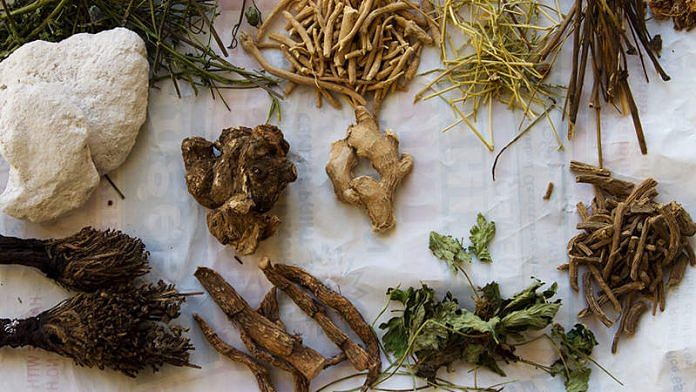New Delhi: The Narendra Modi government is planning to promote the traditional Tibetan system of medicine, known as ‘Sowa-Rigpa’ or Amchi medicine, which is similar to Ayurveda.
Sources said the Prime Minister’s Office (PMO) is extremely keen on promoting Sowa-Rigpa, which is one of the oldest and most well-documented medicine systems in the world.
The government is currently working on a proposal to make National Research Institute For Sowa-Rigpa (NRISR) in Leh an autonomous institute by renaming it National Institute of Sowa-Rigpa (NISR). The autonomous institute will function under the Central Council for Research in Ayurvedic Sciences, Ministry of AYUSH. This proposal has been cleared by the PMO.
“It has also been discussed and cleared by inter-ministerial panel consisting of ministry of culture, NITI Aayog and health ministry,” said a senior official at the ministry of AYUSH on condition of anonymity. “We are waiting for cabinet clearance now.”
What is Sowa-Rigpa?
‘Sowa-Rigpa’ means ‘Science of healing’.
The system is based on indigenous medicine of Tibet enriched with Ayurveda, Chinese and Greek medicine. It is practised widely in Sikkim, Arunachal Pradesh, Darjeeling (West Bengal), Dharamshala, Lahaul and Spiti (both in Himachal Pradesh) and Ladakh, according to the AYUSH ministry’s website.
At present a six-year course called ‘Menpa Kachupa’, which is equivalent to a Bachelor degree of Sowa-Rigpa is offered in four institutions across India — Central Institute of Buddhist Studies (Leh), Tibetan Medical and Astrological Institute by Dalai Lama (Dharamshala), Central University for Tibetan Studies (Uttar Pradesh) and Chagpori Medical Institute (Darjeeling).
Govt credits Dalai Lama for bringing Sowa-Rigpa to India
According to government data, there are around 1,000 practitioners of Sowa-Rigpa in India, who mostly reside in the Himalayan regions, with Dharamshala and Ladakh being the main centres.
The government has credited Tibetan spiritual leader the Dalai Lama for introducing this medicinal practice in India from Dharamsala, where he had set up the institute to train youngsters.
“This institute has a medical college, pharmacy, an astrology section and a chain of 40-50 clinics all over India,” according to AYUSH Ministry.
“Central Council for Tibetan Medicine in Dharamsala regulates the practice in India and looks after the registration of practitioners, standard of colleges and other mechanisms to regulate,” it stated.
Also read: PM Modi’s acupressure roller could work for some, but mostly it is pseudoscience
Govt recognised Sowa-Rigpa, but didn’t promote it
According to a government release, “The fundamental text book of the system is believed to have been taught by Buddha himself.”
Although the government recognised Sowa-Rigpa in 2009, it remained the least promoted, unlike Ayurveda. India was the fourth country in the world after China, Bhutan and Mongolia to recognise Sowa-Rigpa.
The Modi government had last year included Sowa-Rigpa into the acronym of AYUSH where the alphabet ‘S’ represents both — Siddha and Sowa-Rigpa. But the logo of the AYUSH ministry, on its website, still represents five traditional systems of medicine in India — Ayurveda, Yoga and Naturopathy, Unani, Siddha and Homeopathy.
Also read: AYUSH ministry will now suggest 50 packages for inclusion under Ayushman Bharat



